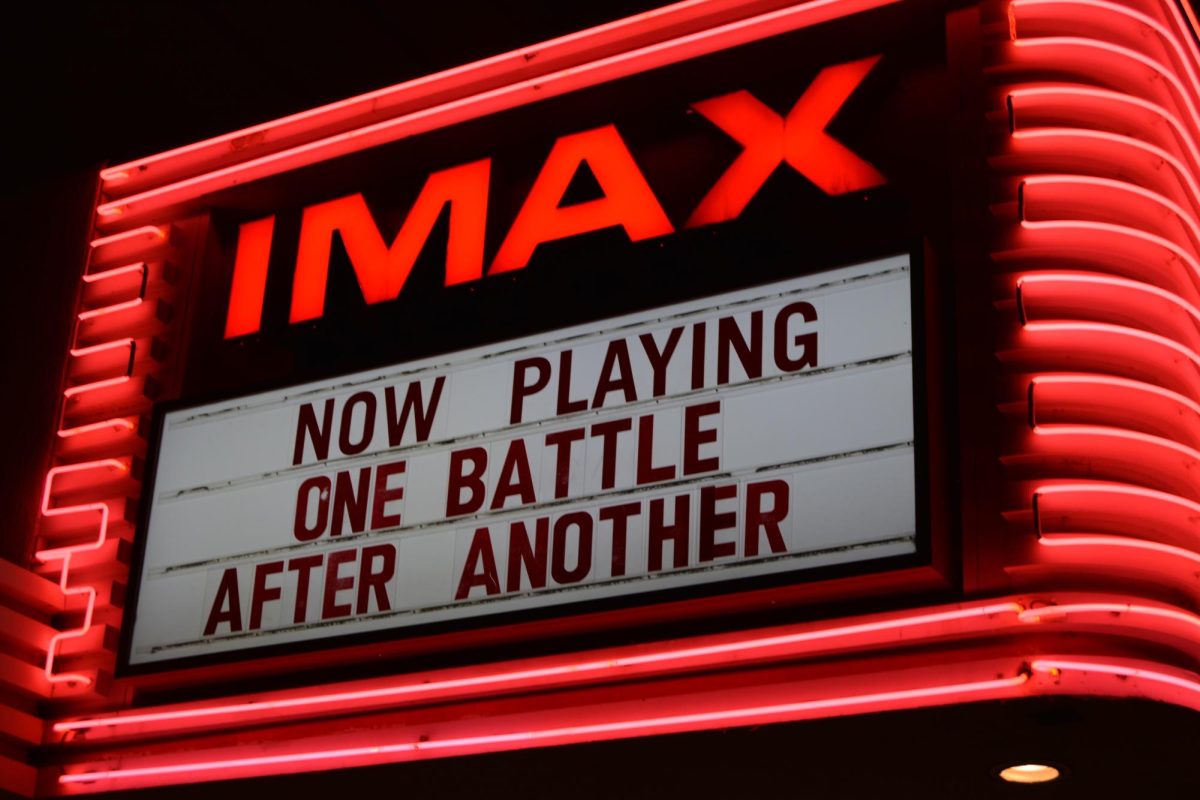Paul Thomas Anderson’s “One Battle After Another” is an entertaining, chaotic ride that will keep your eyes glued to the screen despite its almost three-hour runtime.
Best known for 2007’s “There Will Be Blood,” Anderson’s latest film was partially filmed in Sacramento with many of the city’s landmarks, such as Tower Bridge and the Sacramento County Courthouse on display.
During its production, the film faced some controversy as a homeless encampment had to be cleared for filming, according to ABC10.
Parts of the film that feature Sacramento all occur in the beginning and for Sacramento-area residents, seeing places physically recognizable to them bolsters their immersion towards it. This familiarity works as a hook that reels them into the story and gives them a reason to care from the get go.
The film features a time-skip, dividing the film into an introductory part that plants the seed of conflict and the latter part where the conflict begins to develop and come into fruition.
The first part follows Bob Ferguson and Perfidia Beverly Hills who are members of an anarchist revolutionary group and are played by Leonardo DiCaprio (“Killers of the Flower Moon”) and Teyana Taylor (“A Thousand and One”) respectively. As a first impression, it may appear as if DiCaprio was miscast because he doesn’t fit the mold of a young anarchist revolutionary. However, that stops being a problem after the time-skip where it becomes self-evident why he was a great choice for the role. The chaotic and desperate nature Bob carries in the latter part of the film is convincingly portrayed by DiCaprio.
The antagonist of the film is Steven J. Lockjaw played by Sean Penn (“Mystic River”) Lockjaw is a military man who after his first encounter with Perfidia becomes infatuated with her but not in a romantic way but rather as more of a fetish. This is something that will eventually trigger the events in the second part of the film. Penn plays his part annoyingly and that’s on purpose. He’s a “I can’t believe he keeps getting away with it” kind of character and, for the revolutionary themes of the movie, it works.
Bob and Perfidia end up having a little girl, Willa Ferguson, who becomes the centerpiece of the second part of the film. Willa is played by Chase Infiniti (Apple TV’s “Presumed Innocent”) in her theatrical debut. However, her performance was anything but that of a novice. She plays the character with the grace of a child who has just been thrown into an unknown world. For someone whose role makes or breaks the movie, she handled the pressure well.
After a 16-year time skip, the now Colonel Lockjaw has his eye set on joining an exclusive white supremacist society. His only impediment is his past history with Perfidia so he sets out on a manhunt targeting both Bob and Willa.
The decision to structure a time-skip within the story makes the film easy to follow but with one minor problem. Some of the revolutionary members comeback post-time skip but since the first part doesn’t emphasize them enough it is possible to be left confused about who the characters are and why they were important.
Politically charged is an understatement because the film dives into immigration, xenophobia, racism and extremism but not in a way in which the messaging takes away from the story itself. Instead there is a well put together balance that showcases the heart of the film, a father looking for his daughter.
An immigration enforcement raid is depicted elevating the impact of the movie due to how commonplace these operations have become. As opposed to other political themes, this one is less ambiguous with its messaging making it clear why they believe these raids happen and how to protect those being targeted.
The film is not all nitty gritty, however, and has its comedic moments. However, the comedy does not detract from the story as the deadpan comedy style blends well with the film’s semi-serious tone. When the comedy does work, it does add another well-structured dimension to the film.
The greatest attribute the movie has is the way it creates tension. The mix of the cinematography, with its blurred background close up shots that allows the actors to really sell their emotions and its score that is continuous, usually featuring single instruments over prolonged periods of time. There’s no better example of these mechanics at work than the car chase that happens towards the end of the movie.
Produced by Warner Brothers, “One Battle After Another” is as thrilling as its title suggests and a superbly-crafted movie that goes by in a breeze. “One Battle After Another” will surely partake in one battle after another come award season.

